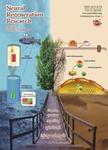Cervical sympathetic trunk transection affects inducible nitric oxide synthase expression in rat hippocampus following focal cerebral ischemia/reperfusion injury
Cervical sympathetic trunk transection affects inducible nitric oxide synthase expression in rat hippocampus following focal cerebral ischemia/reperfusion injury作者机构:Department of Anesthesiology Taihe Hospital Yunyang Medical College Shiyan 442000 Hubei Province China Department of Anesthesiology Dongfang Hospital Tongji University Shanghai 200120 China Departmetn of Anesthesiology Renmin Hospital Wuhan University Wuhan 430060 Hubei Province China
出 版 物:《Neural Regeneration Research》 (中国神经再生研究(英文版))
年 卷 期:2008年第3卷第10期
页 面:1084-1087页
核心收录:
学科分类:0710[理学-生物学] 1002[医学-临床医学] 1001[医学-基础医学(可授医学、理学学位)] 100204[医学-神经病学] 10[医学]
基 金:Supported by: the Excellent Middle-aged and Youth Talent Project of Education Department of Hubei Province No. 2002B03001
主 题:brain ischemia/reperfusion inducible nitric oxide synthase sympathetic trunk
摘 要:BACKGROUND: The stellate ganglion block (SGB) plays a protective role in focal cerebral ischemia/reperfusion injury. The human SGB can be simulated by transection of the cervical sympathetic trunk (TCST) in rats. OBJECTIVE: To observe the effects of TCST on inducible nitric oxide synthase (iNOS) levels and cerebral infarct volume in the hippocampus of rats with cerebral ischemia/reperfusion injury, and to analyze the mechanism of action. DESIGN, TIME AND SETTING: A completely randomized, controlled, neuropathological experiment was performed at the Institute of Neurological Disease, Taihe Hospital, Yunyang Medical College between March and September 2006. MATERIALS: A total of 93 Wistar rats, aged 1718 weeks, of either gender, were used for this study. 2, 3, 5-triphenyl tetrazolium chloride was purchased from Changsha Hongyuan Biological Reagent Company China. Rabbit iNOS antibody and goat anti-rabbit IgG antibody were the products of Wuhan Boster Biological Reagent Co., Ltd., China. METHODS: Ten rats were randomly selected for the sham-operated group. Cerebral ischemia/reperfusion injury was induced by middle cerebral artery occlusion (MCAO) using the suture method in the remaining rats. Forty successful rat models were randomly and equally divided into the following two groups: (1) TCST group: subsequent to TCST, MCAO was performed for 2 hours, followed by 24 hours reperfusion; (2) model group: rats underwent experimental procedures similar to the TCST group, with the exception of TCST. Rats in the sham-operated group were subjected to experimental procedures similar to the model group; however, the thread was only introduced to a depth of 10 mm. MAIN OUTCOME MEASURES: Following 24 hours of reperfusion, functional neurological deficits were scored. Brain tissue sections from ten rats of each group were used to measure cerebral infarct volume by TTC staining. Hippocampal tissue sections of an additional ten rats from each group were used to detect iNOS levels using



